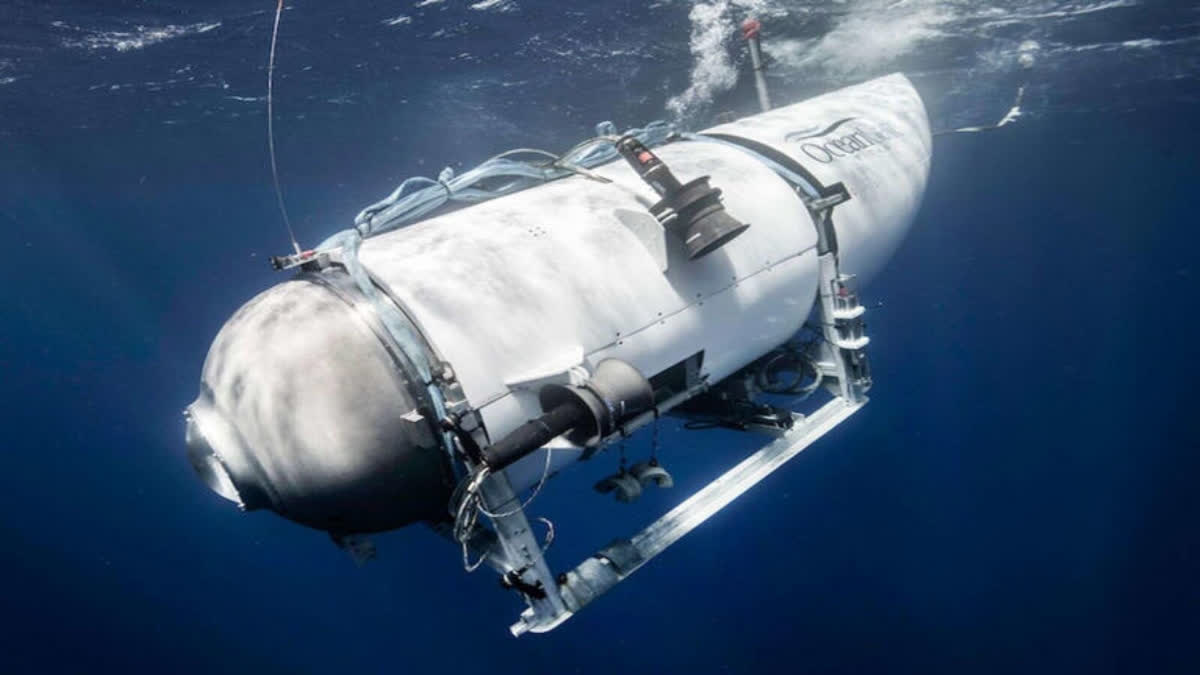New York: Authorities from the U.S. and Canada began the process of investigating the cause of the fatal Titan submersible implosion even as they grappled with questions of who was responsible for determining how the tragedy unfolded.
A formal inquiry has not yet been launched because maritime agencies are still busy searching the area where the vessel was destroyed, killing all five people aboard, the U.S. Coast Guard said Friday. Debris was located about 12,500 feet (3,810 meters) underwater, several hundred feet away from the Titanic wreckage it was on its way to explore. The U.S. Coast Guard led the initial search and rescue mission, which was a massive international effort that likely cost millions of dollars.
It was not entirely clear Friday who would have the authority to lead what is sure to be a complex investigation involving several countries. OceanGate Expeditions, the company that owned and operated the Titan, is based in the U.S. but the submersible was registered in the Bahamas. OceanGate is based in Everett, Washington, but closed when the Titan was found. Meanwhile, the Titan’s mother ship, the Polar Prince, was from Canada, and those killed were from England, Pakistan, France, and the U.S.
The National Transportation Safety Board said Friday that the U.S. Coast Guard has declared the loss of the Titan submersible to be a “major marine casualty” and the Coast Guard will lead the investigation. NTSB spokesperson Peter Knudson said that information was provided to the agency’s senior management by Coast Guard officials, and the NTSB has joined the investigation.
The Coast Guard has not confirmed that it will take the lead. Coast Guard headquarters said the Coast Guard First District in Boston will discuss future operations and plans, but did not say when. The First District did not respond to phone and email messages seeking comment Friday.
Meanwhile, the Transportation Safety Board of Canada said Friday that it is launching an investigation into the Polar Prince. Seventeen crew members and 24 others were on board the ship during the Titan’s journey. The deep-sea investigations promise to be long and painstaking, as is the nature of investigations in the murky depths of the ocean.
“This is an incredibly unforgiving environment down there on the seafloor,” said Rear Adm. John Mauger, of the Coast Guard First District. How the overall investigation will proceed is complicated by the fact that the world of deep-sea exploration is not well-regulated. Deep-sea expeditions like those offered by OceanGate are scrutinized less than the companies that launch people into space, noted Salvatore Mercogliano, a history professor at Campbell University in North Carolina who focuses on maritime history and policy.
A key part of any investigation is likely to be the Titan itself. Questions have been raised about whether the vessel was destined for disaster because of its unconventional design and its creator’s refusal to submit to independent checks that are standard in the industry. The Titan was not registered as a U.S. vessel or with international agencies that regulate safety. And it wasn’t classified by a maritime industry group that sets standards on matters such as hull construction.
